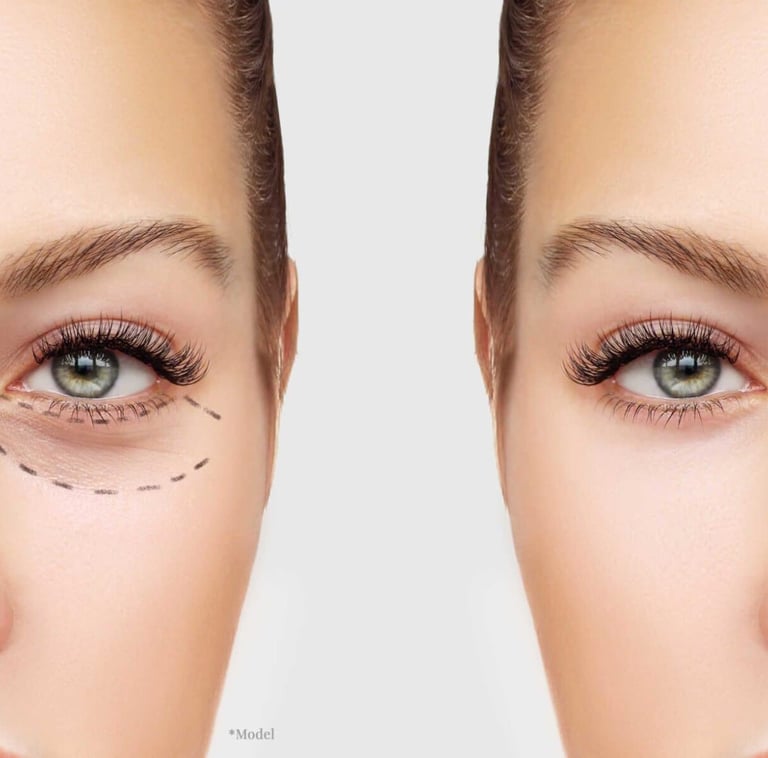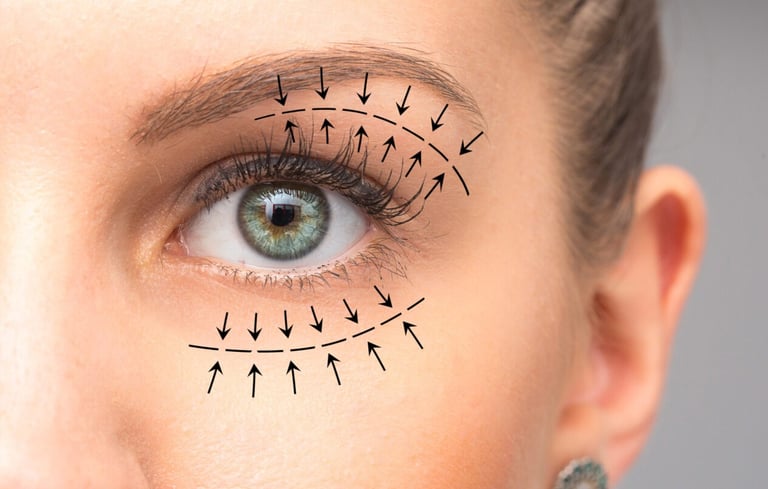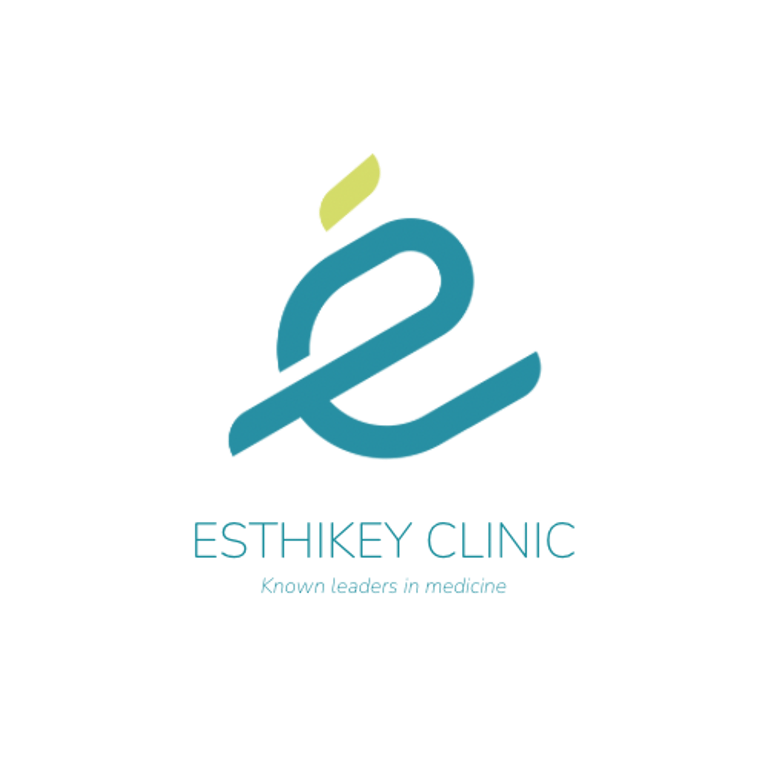Blepheroplasty
Blepharoplasty, commonly known as eyelid surgery, is a cosmetic surgical procedure designed to improve the appearance of the eyelids. It can be performed on the upper eyelids, lower eyelids, or both, and is intended to address issues such as sagging skin, puffiness, and bags under the eyes. The procedure can also be functional, correcting vision problems caused by drooping eyelids.
Key Aspects of Blepharoplasty:
Candidates:
Cosmetic Concerns: Individuals with excess skin or fat causing droopy upper eyelids, puffy bags under the eyes, or sagging lower eyelids.
Functional Issues: People experiencing impaired vision due to overhanging upper eyelid skin.
General Health: Candidates should be in good overall health, non-smokers, and have realistic expectations.
Procedure Types:
Upper Blepharoplasty: Focuses on the upper eyelids, removing excess skin, muscle, and sometimes fat. It can correct droopy eyelids that may impair vision.
Lower Blepharoplasty: Targets the lower eyelids, removing or repositioning excess fat and skin, and tightening the muscle to reduce bags and improve contour.
Procedure Steps:
Anesthesia: The procedure is typically performed under local anesthesia with sedation or general anesthesia.
Incision:
For upper blepharoplasty, incisions are made within the natural crease of the upper eyelid.
For lower blepharoplasty, incisions can be made just below the lash line or inside the lower eyelid (transconjunctival approach).
Tissue Removal and Adjustment: The surgeon removes or repositions excess skin, fat, and sometimes muscle to achieve the desired result.
Closing the Incisions: Incisions are closed with sutures, skin adhesives, or surgical tape.
Recovery:
Immediate Post-Op: Patients may experience swelling, bruising, and discomfort, which can be managed with cold compresses and prescribed pain medication.
Downtime: Most patients can return to normal activities within 7-10 days, although strenuous activities should be avoided for a few weeks.
Healing: Swelling and bruising typically subside within two weeks, and final results become more apparent over several months.
Follow-Up: Follow-up visits are necessary to monitor healing and remove sutures if they are not dissolvable.
Results:
Immediate and Long-Term: Initial improvements are visible once swelling subsides, with final results evident within a few months.
Longevity: Results are long-lasting but can be affected by aging, lifestyle, and environmental factors. Maintenance procedures may be desired as aging continues.
Blepharoplasty can significantly enhance the appearance of the eyes, making them look more youthful and rested. It's important to consult with a qualified plastic surgeon to discuss goals, options, and potential outcomes for the best results.






